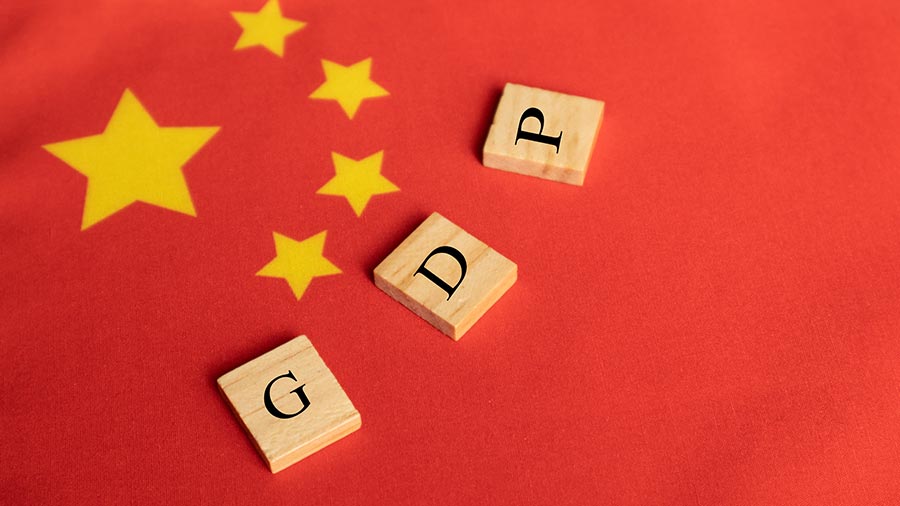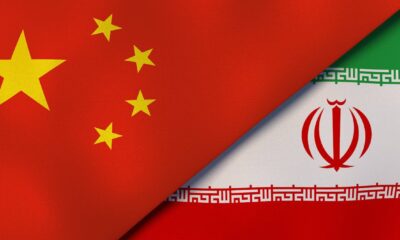China
China’s probe of Canadian canola will put both exports and farmers in jeopardy

Ongoing tariff wars between China and Canada arise from geopolitical tensions, impacting canola exports and threatening Canadian farmers. Both nations must navigate trade policies cautiously to avoid further retaliation.
Tariff wars are a recurring feature in the global trading system, and tensions between China and Canada have been ongoing for years. These tariff wars are largely driven by geopolitical tensions.
In 2019, for instance, China banned Canadian meat imports following the detention of Huawei’s chief executive officer, Meng Wanzhou. Although China cited the use of banned feed additives in Canadian meat as the reason, many viewed it as a diplomatic response to the rift between Ottawa and Beijing.
Now, China is threatening to investigate Canada for potential dumping of canola into its market. In international trade, dumping is a type of price discrimination where a product is sold at different prices in domestic and export markets. Essentially, it involves selling a product in a foreign market at a price lower than its normal value in the home country.
This decision came after Canada imposed a 100 per cent tariff on electric vehicles and a 25 per cent tariff on steel and aluminum from China effective Oct. 1, 2024. It’s clear this move by China is a direct retaliation for the tariffs on electric vehicles.
Trade tensions between countries can severely disrupt international trade. My previous research demonstrated how trade tensions between Canada and the United States during Donald Trump’s presidency negatively impacted trade between the two countries, particularly in the agri-food sector.
The mere threat of an anti-dumping duty can discourage imports, making anti-dumping laws a form of non-tariff barrier, even when the duty is not actually imposed. Although China has only announced a dumping investigation, the prices of canola oil futures are already being impacted.
A canola plant in full bloom is pictured near Cremona, Alta., in July 2024.
THE CANADIAN PRESS/Jeff McIntosh
Anti-dumping procedures
As members of the World Trade Organization (WTO), both Canada and China are required to ensure their trade policies comply with its regulations.
Under the WTO framework, members can take action against dumping to protect their domestic markets. However, such actions must follow the established WTO protocols, including filing complaints through the organization’s dispute settlement mechanism.
The WTO’s Anti-Dumping Agreement outlines how countries can respond to dumping. In this case, China would need to prove that Canada is dumping canola, quantify the extent of the dumping and demonstrate that it is causing or threatening harm to Chinese canola farmers.
If China’s investigation uncovers evidence of dumping, it has the right to impose anti-dumping duties. These duties are applied when dumping is proven and shown to have harmed the domestic industry.
The threat or imposition of such duties could significantly disrupt Canada’s canola exports to China, which would have serious implications for Canadian farmers who rely heavily on global markets to sell their products.
Canada’s canola export to China
Canada exports 90 per cent of its total canola production, with exports of canola seed, oil and meal amounting to $15.8 billion in 2023. China is Canada’s second-largest importer of canola, after the U.S., with imports totalling $5 billion in 2023.
This means China accounted for nearly one-third of Canada’s total canola export value that year. Notably, China is the largest market for canola seed, while the U.S. is the largest market for canola oil and meal.
Canola is predominantly exported to China in its primary form (seed) rather than as processed products (oil and meal). The data shows there were stable exports to China from 2014 to 2018, but there was a sharp decline in canola seed exports starting in 2019, which persisted until 2023.
The quantity of Canadian canola products imported by China over the years.
(Canola Council of Canada)
This drop coincides with a period of diplomatic tension between Canada and China, suggesting that trade disputes can have a significant negative impact on bilateral trade. Thus, signalling the current trade war could have devastating effect for canola farmers, especially as China accounts for about 65 per cent of Canada’s canola seed export.
Additionally, Canada’s canola exports have shown limited diversification, relying heavily on just four countries: the U.S., China, Mexico and Japan. Together, these countries accounted for 98 per cent of Canada’s total export value in 2023.
The U.S. led with imports worth $8.6 billion, representing 54 per cent of Canada’s total exports, followed by China with $5 billion (32 per cent), Mexico with $1 billion (six per cent), and Japan with $883 million (5.6 per cent).
Canada’s canola exports heavily rely on the U.S., China, Mexico and Japan.
(Canola Council of Canada)
This heavy reliance on few markets heightens Canada’s vulnerability to trade disruptions. If China imposes anti-dumping tariffs, this could make Canadian canola not competitive in the Chinese market, Canada could risk losing 30 per cent of its canola export value to other potential suppliers. The Canola Council of Canada has acknowledged China as an important and valued market for Canada’s canola.
What’s the way forward?
A canola grower checks on his storage bins full of last year’s crop of canola seed on his farm near Cremona, Alta., in 2019.
THE CANADIAN PRESS/Jeff McIntosh
Like many advanced economies, Canada seeks to shield its domestic market from the influx of low-cost Chinese products, such as electric vehicles. However, Canada must exercise caution, particularly when adopting trade policies from larger economies like the U.S. and the European Union.
These larger economies hold greater leverage in international trade negotiations, unlike Canada, a small open economy that faces greater risks in engaging in a trade war with China.
Moreover, to support a swift transition to a green economy and help Canada meet its climate target of achieving 100 per cent zero-emission vehicle sales by 2035, it is essential that electric vehicles become more affordable for the average Canadian.
Instead of escalating trade tensions with China, Canada should explore alternative measures such as safeguards or tariff rate quotas on Chinese electric cars. Those approaches could be mutually beneficial and less likely to provoke a tit-for-tat retaliation.
Imposing a prohibitive tariff on electric vehicles from China would come at the expense of other Canadian sectors that rely on Chinese buyers. Canada must tread carefully to avoid sacrificing jobs in the agricultural sector while trying to protect those in the automobile industry.
Canola farmers, in particular, would likely bear the cost of Canada’s unilateral tariff on China. Numerous other sectors could also be targeted, as China would likely retaliate by matching the impact on its own exports.
Canada must strive to minimize diplomatic tensions and avoid trade wars with major global market players, as such conflicts are becoming increasingly frequent. Recent trade disputes, including those with the U.S. during the NAFTA renegotiation, Saudi Arabia over human rights issues and China following the detention of a Huawei executive, can significantly undermine Canada’s export competitiveness.
This article is republished from The Conversation under a Creative Commons license. Read the original article.
Business
China Reports Agreement on Ceasefire between Myanmar’s Factions

Myanmar’s conflicting parties have reached a ceasefire agreement, facilitated by China, aiming to reduce violence and promote peace in the region.
Myanmar Ceasefire Agreement
In a significant development, conflicting parties in Myanmar have reached an agreement for a ceasefire, with China facilitating discussions. This breakthrough is crucial for restoring peace in a nation that has been marred by violence and political strife in recent years. The ceasefire aims to pave the way for reconciliation efforts and improve the humanitarian situation in affected areas.
Role of China
China’s involvement as a mediator highlights its growing influence in resolving regional conflicts. The Chinese government has been working closely with both sides to promote dialogue and trust, crucial elements for a long-term peace solution. Increased stability in Myanmar can benefit regional security and economic development, making China’s mediation significant.
Looking Forward
The hope is that this ceasefire will lead to further negotiations addressing underlying issues in Myanmar. While challenges remain, both parties have expressed willingness to work towards a peaceful resolution. The international community will be watching closely to see if this ceasefire can be sustained and lead to enduring peace for the people of Myanmar.
China
2024 China Economic Review: GDP, Trade, and Foreign Direct Investment Analysis

In 2024, China’s economy grew 5%, supported by stimulus measures, strong exports, and high-tech investments, despite weak domestic demand and demographic challenges. Key sectors like manufacturing and digital economy thrived, necessitating structural reforms for sustained growth into 2025.
China’s economy grew 5% in 2024, driven by stimulus measures, strong exports, and high-tech investment, despite challenges like weak domestic demand and demographic pressures. Structural reforms and targeted policies are essential for sustaining growth into 2025.
China’s economic performance in 2024 saw a return to steady growth, achieving a 5 percent GDP expansion in line with the government’s target, as per the official data released by the National Bureau of Statistics (NBS) on January 17, 2025. This outcome was largely bolstered by stimulus measures that helped drive a stronger-than-expected fourth-quarter recovery. While the country’s economy faced challenges such as declining population numbers and sluggish consumer demand, there were signs of optimism across key sectors, including industrial output and digital economy growth.
Additionally, China is beginning to pivot away from its dependence on the property sector, with the digital economy playing an increasingly significant role in economic expansion.
This article explores the major economic highlights from 2024 and examines the key trends, challenges, and opportunities that will shape China’s economy in the year ahead.
In 2024, China’s GDP reached RMB 134.91 trillion (US$18.80 trillion), maintaining its position as the second-largest economy in the world, behind only the United States, whose projected GDP for 2024 stands at approximately US$29 trillion. This reflects a year-on-year growth of 5.0 percent, in line with the government’s official target of “around 5 percent“ set during the 2024 Two Sessions. While slower than the 5.2 percent growth achieved in 2023, it highlights a stable recovery largely driven by strong export performance and targeted stimulus measures throughout the year.
The economy saw accelerated growth in the final quarter of 2024, with GDP expanding by 5.4 percent, surpassing expectations and making a substantial contribution to the overall 5.0 percent increase. Indeed, quarterly growth performance in 2024 showed steady improvement: the first quarter recorded a 5.3 percent increase, followed by 4.7 percent in Q2, and 4.6 percent in Q3.
Sectoral performance highlights revealed the manufacturing and service sectors as key drivers.
| This article was first published by China Briefing , which is produced by Dezan Shira & Associates. The firm assists foreign investors throughout Asia from offices across the world, including in in China, Hong Kong, Vietnam, Singapore, and India . Readers may write to info@dezshira.com for more support. |
Read the rest of the original article.
China
How China’s appetite for salmon could reshape global seafood markets – new research

China’s salmon demand surged 46% in 2023, prompting global exporters to respond. Challenges in domestic salmon production highlight opportunities for rainbow trout, reshaping the seafood market towards sustainability and consumer preferences.
China’s demand for farmed salmon is growing at an unprecedented pace. In 2023, its imports grew by 46% year on year – with imports of fresh and chilled Atlantic salmon up 63%.
This remarkable growth is reshaping the global seafood trade. Exporters from Scotland, Norway, Chile, Australia, Faroe Islands, Canada and Iceland are racing to supply the needs of this vast and rapidly evolving market.
At the same time, China’s efforts to produce its own Atlantic salmon have faced significant challenges, highlighting the need for substitutes like rainbow trout to meet the country’s growing appetite for seafood delicacies.
An important shift occurred in 2018, when the Chinese government permitted rainbow trout to be labelled and sold as salmon. This decision blurred the distinction between imported Atlantic salmon and locally farmed rainbow trout, creating a more accessible option for cost-sensitive consumers.
Trout is comparable to salmon in appearance and size, with firm and oily meat that has a similar orange-pink colour. Nutritionally too, the species are alike, as are the ways in which they can be cooked and prepared.
In our new research which included taste tests, we found that many Chinese consumers could not distinguish between domestic rainbow trout and imported Atlantic salmon in blind testing. But when informed about the origin, testers’ preferences shifted strongly in favour of imported Atlantic salmon, highlighting the power of provenance in consumer tastes.
Although people’s willingness to pay did not vary initially in our blind tests, it became a decisive factor once the origin of the fish was revealed.
But we found that origin alone was not enough. For our testers to be prepared to pay higher prices, they also had to like the look, smell and taste of the product more, or be persuaded by its ecolabel (indicating environmental standards).
Environmental costs
Transporting Atlantic salmon from Scottish lochs, Norwegian fjords or Chilean waters to Chinese markets involves complex logistics and significant environmental costs. The carbon footprint of this trade, combined with the resource-intensive nature of salmon aquaculture, raises critical concerns about sustainability.
These challenges are particularly pronounced in China, where consumers have a strong preference for freshness. This drives demand for quick delivery of imported salmon despite its environmental impact, and consumers are increasingly turning to online platforms to buy their seafood.
E-commerce has reshaped seafood retail in China, offering quick delivery and products that cater to consumer demand for quality and freshness. Salmon stands out in this market due to its perceived high value, premium quality and price point. Unlike other expensive seafood that often needs to be sold live to maintain its value, salmon retains its appeal when chilled or frozen.
This makes salmon particularly suited to modern retail models, where sophisticated cold-chain logistics ensure its freshness without the complexities of live transport. However, these innovations come at a cost.
The energy-intensive storage and rapid transportation required for imported salmon contribute significantly to environmental harm. As China’s seafood market continues to grow, addressing the sustainability challenges associated with this trade will be critical to balancing consumer demand with environmental responsibility. Current international certification schemes aiming to improve the sector’s sustainability have had limited impact in China so far.
A worker processing imported fresh salmon in a Beijing wholesale seafood market.
David Little, Author provided
China has made significant efforts to establish a domestic Atlantic salmon industry, but these attempts have largely been unsuccessful due to technical challenges and environmental constraints. This has left a gap that domestically farmed rainbow trout is poised to fill.
A trout farming raceway in Chengdu, China, supplied with fresh river water.
Zixuan Ma, Author provided
In 2022, China produced 37,000 tonnes of rainbow trout. This is a relatively small amount compared with international production levels, but still notable considering that rainbow trout is a new farmed species in China, unlike traditional species like carp.
However, rainbow trout farming in China is geographically constrained, as the species thrives in cooler freshwater temperatures found in higher-lying lakes and reservoirs, as well as in “raceways” (channels supplied continuously with fresh water diverted from rivers).
Advances in aquaculture systems offer a potential pathway to expand China’s production. Trout farming is a more sustainable, locally sourced alternative to Atlantic salmon that reduces the carbon footprint associated with imports and ensures fresher options for Chinese consumers. Developing a robust domestic trout industry could enhance food security, reduce dependence on imports, and create economic opportunities in rural areas.
China’s evolving seafood market offers valuable lessons for the global industry. Emphasising quality, freshness and sustainability will resonate with the increasingly sophisticated Chinese consumer.
At the same time, investment in eco-friendly aquaculture practices, both domestically and internationally, will be essential to balance the growing demand for premium seafood with environmental responsibility. These could include reducing feed waste and recirculating aquaculture systems (which filter and reuse water) to minimise water use. Recycling waste nutrients by using them elsewhere in food production could also be key.
As rainbow trout gains prominence in China’s seafood landscape, the relationship between consumer preferences, environmental concerns and economic opportunities could in turn shape the future of the global salmon trade.
If domestic fish captures a larger share of the Chinese market, salmon producers in Europe, Canada and other exporting regions may face significant challenges. This could ultimately force them to rethink their strategies in order to adapt to shifting market dynamics.
Although the goal of creating a domestic Atlantic salmon industry has proved difficult for China, trout farming presents a practical and sustainable solution for its luxury seafood sector.
This article is republished from The Conversation under a Creative Commons license. Read the original article.











